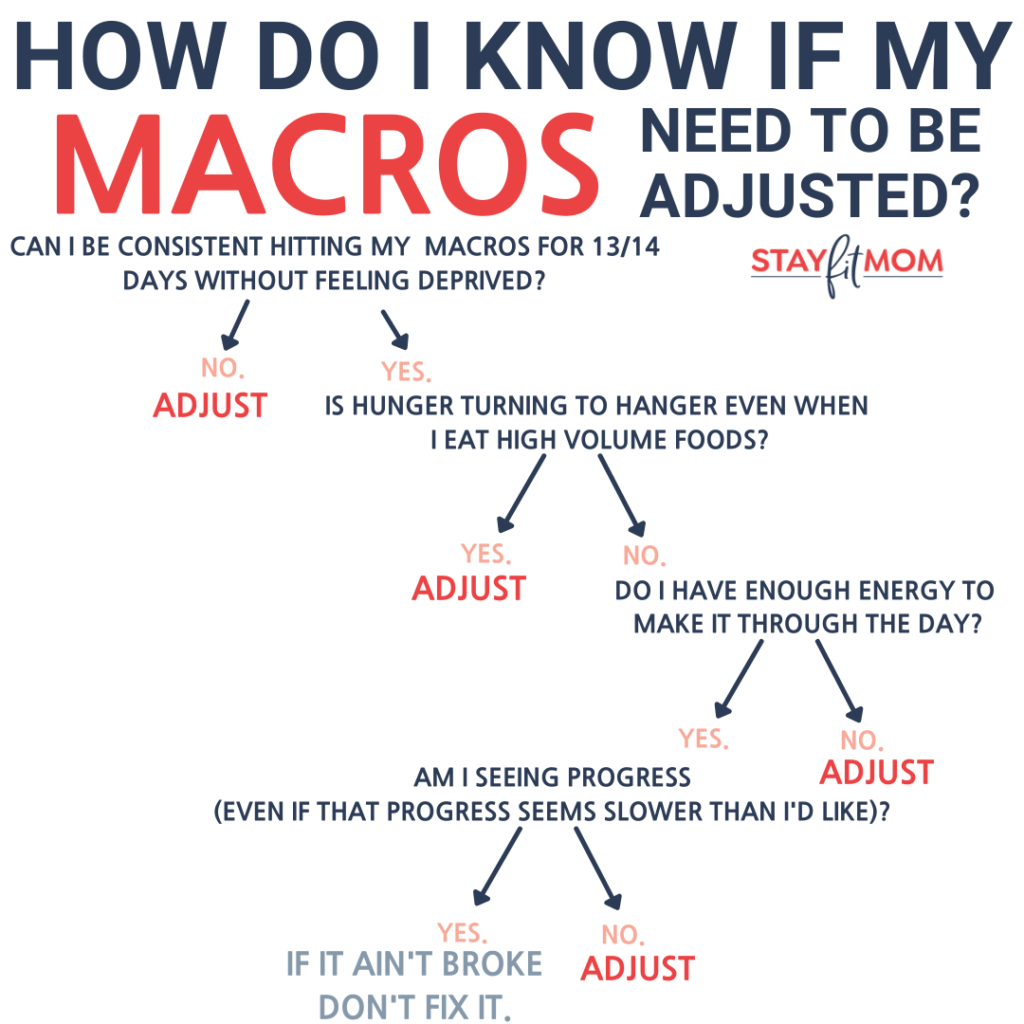No macro calculator or chart on the internet could ever capture the uniqueness that is you. Of course we all have our height, weight and age; that’s pretty black and white, but most of the biofeedback and questions that we ask our clients actually reside in the “gray area.”
These factors include things like: what your life actually looks like, your career, your social life, your NEAT (how much activity you’re getting in a day), your health history, your diet history, the foods you enjoy, your specific training schedule and the types of workouts you do, your genetics, and SO much more. All of those things affect what set of numbers will work well for you. A coach can calculate the most “perfect” set of numbers, but if the client can’t hit them 13/14 days during a two week period (if not 14/14) for 6 weeks at a time, everything becomes moot, because consistency comes first. Without consistency, you’re a car in a parked driveway. The process can’t go without consistency. This is why the best place for your numbers will always be where you can hit them the most consistently. Let it be known, if you want to cut or are in the middle of a cut, you need that 13/14. Cuts are uncomfortable. If it’s challenging to bring in that 13/14 every two weeks while maintaining, reversing or bulking, it will feel extremely challenging to hit your numbers while cutting. Keep in mind also, consistency is what preps the metabolism for a cut.
If you find that every week you’re exceeding your macros or your calorie goal, this is a sign that numbers need to be raised in order to encourage consistency. Let it be known, slower progress while feeling great with plenty of food freedom is better than minimal progress due to inconsistency, while your metabolism reaps no benefits. It’s better for you to have a higher fats percentage or carbs percentage, or a lower protein percentage with high consistency. If the element of consistency isn’t there, it truly doesn’t matter where we put numbers because the body isn’t going to register what we’re trying to do here. But, here’s the good news: we are here to find where your sweet spot lies and get you comfortable! Forget that magic set of macros and let us do the calculating and configuring. I promise you’re in the best hands.
We want to fuel you well every single day, even on the weekends, and even during your busy week. Maybe you have a very high stress job through the week, such as a nurse or a doctor, for example. Maybe you’re working 12 hour shifts at the hospital for 4 days at a time and frequently put into fight or flight mode, where your cortisol levels shoot through the roof and your adrenals are spent. You find through the week, it’s difficult to fit food in. But by the time you’re off work at 8 pm after that last shift of the week, you’re ravenous and reaching for the cereal box and ready to eat everything in sight. When Saturday comes around, you’re ready to eat all of the comfort food. Maybe you’re a busy mom with multiple kids, shuffling kids to school, practices, ball games, etc, and by the time Friday night rolls around, you’re reaching for the chips or the ice cream. 1,600 calories might feel good to you through the week, when you’re in fight or flight mode. But what about Saturday? What about family gatherings and events on the weekends? If your numbers don’t allow you the freedom that you need on the weekends in order to stay consistent, those aren’t the right numbers for you. You’re going to have to bridge the gap between your work week and your weekends. For the sake of your metabolic health, you’re going to find that you may need to be more intentional with your nutrition through the week, even when you don’t feel like it. Now, I’m not talking about going hog wild on all of the potlucks over the weekends. We will always have to be intentional about food choices and our macro budget, no matter what. But you should feel happy about your macro budget when you’re “ON,” and when you’re “OFF.”
We really want that really high consistency early so that we can get you feeling great with food freedom as quickly as possible, push momentum forward, and learn where your sweet spot actually is. This is why it makes us so happy when clients track and remain intentional in the beginning with planning and tracking, even if the client doesn’t hit their numbers in range. We fully expect new clients will need time to navigate the learning curve and “figure this whole process out.” But when a new client comes to us here at SFM, we close our eyes and pray that the client will be consistent, so that we can tweak numbers in order to get the client the most comfortable, while seeing the best results. Once you have been in cruise control for a while, it’s okay to kick back a little more. By then, you’ve worked hard for that extra freedom! But you have to put in the effort and time. The longer you stick it out, the greater the reward. In the beginning, yes, it’s uncomfortable, tedious and daunting. You have to see the bigger picture.
There is a reason why we say “the most consistent.” We truly believe in progress over time. Perhaps in your first 6 weeks, you were only hitting your macros within range occasionally. Then, you increased to two days a week. THEN, you raised your consistency up to 5/7 days a week. That is such an improvement from where we started out. Improvement and growth are what we are so excited for! Perfection is never the expectation.
On the flip side of that, if you’re feeling discouraged or unhappy with results, calculate your consistency. Take the number of green days you’ve earned divided by the number of days you’ve been coached. How’s your consistency? If it’s not A status (7/7 or 13/14) then we want to increase consistency. Read more about auditing your macro counting accuracy HERE.
All in all, a client will always drive momentum the most efficiently and see the best and quickest results with a 7/7 for weeks at a time, or a 13/14 every two weeks for a long period of time. With that being said, we recognize that everyone’s journey is different, and everyone’s SEASON is different. Honor your season. Be honest about whether or not your expectations and your effort align. And ultimately, know that we’re here to set you up for success in your season. That’s what the coach/client relationship is all about! We are celebrating you and your individual wins. Small, slow and steady changes are the changes that yield total health transformations. Those changes are what form lifelong healthy habits. This is your individual journey, and those steps that might feel small, are actually so BIG.







1 Comment
Great blog Courtney, thank you!